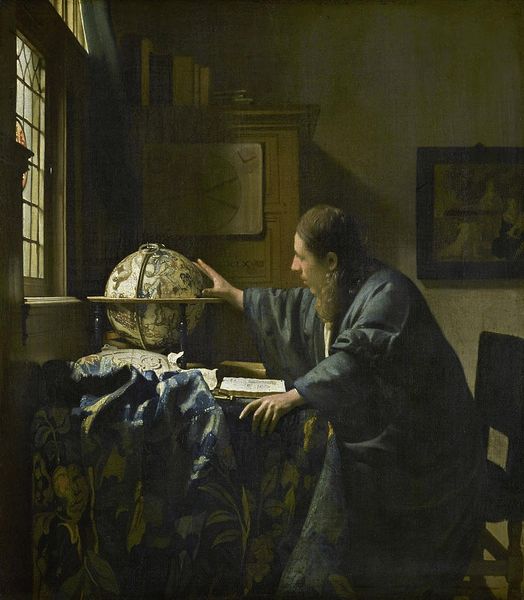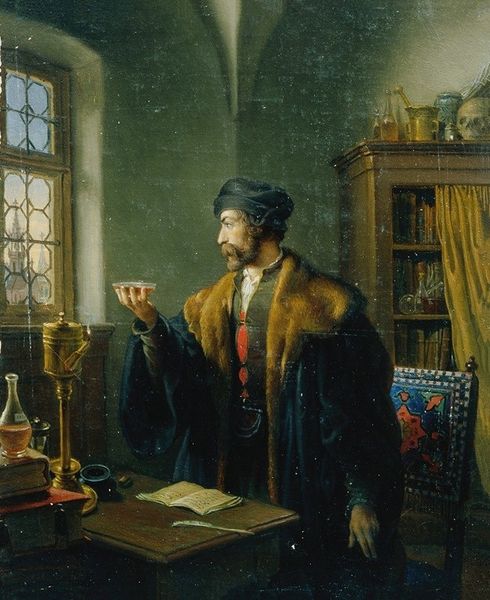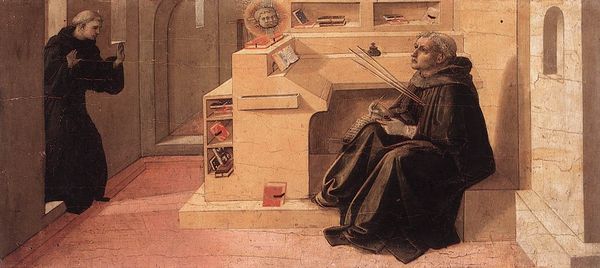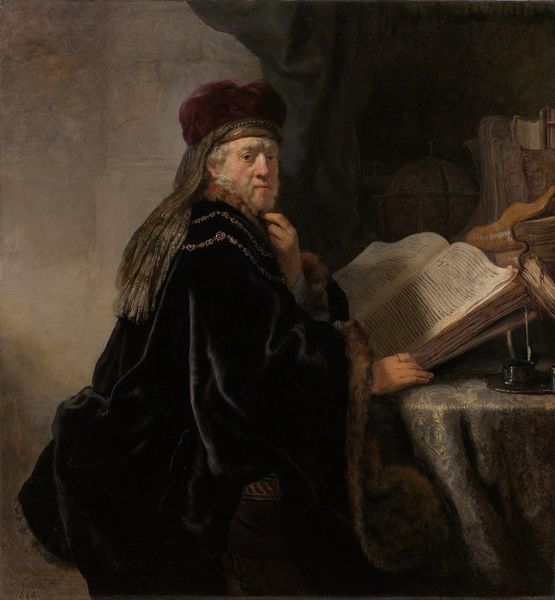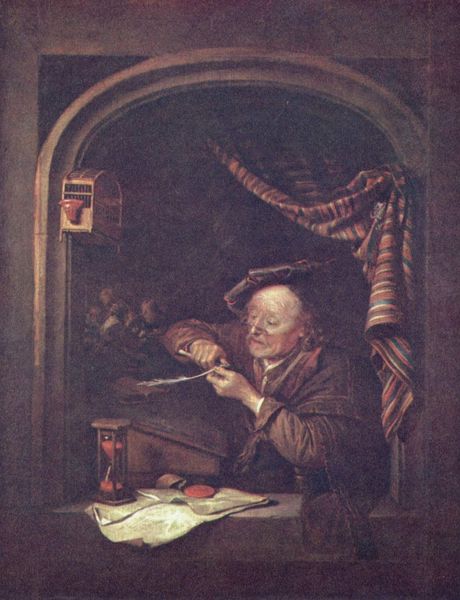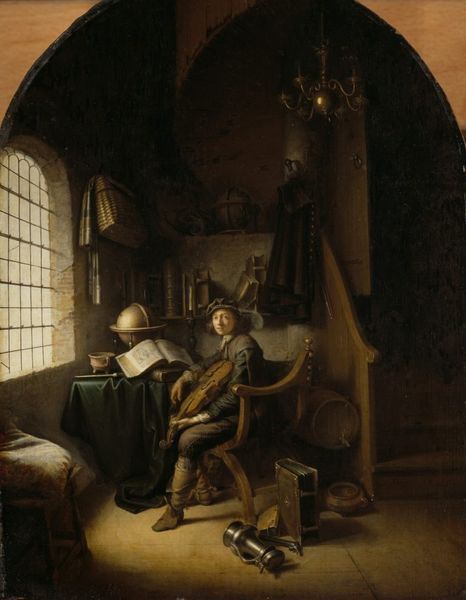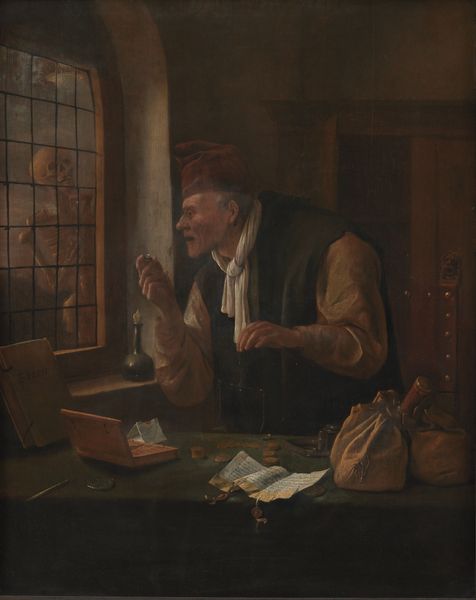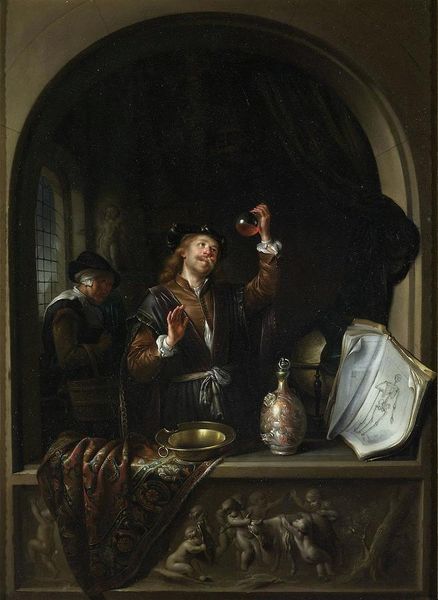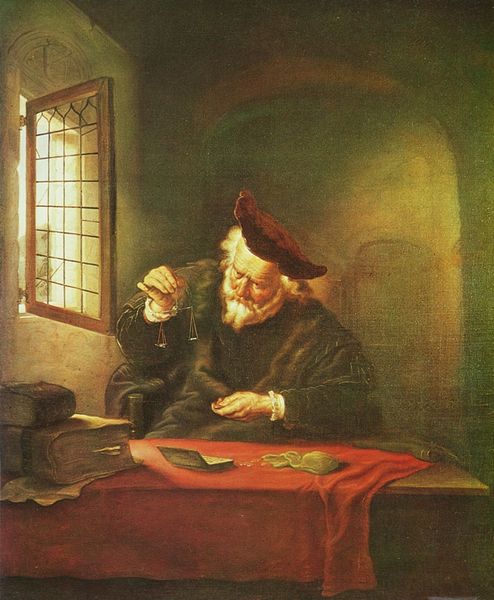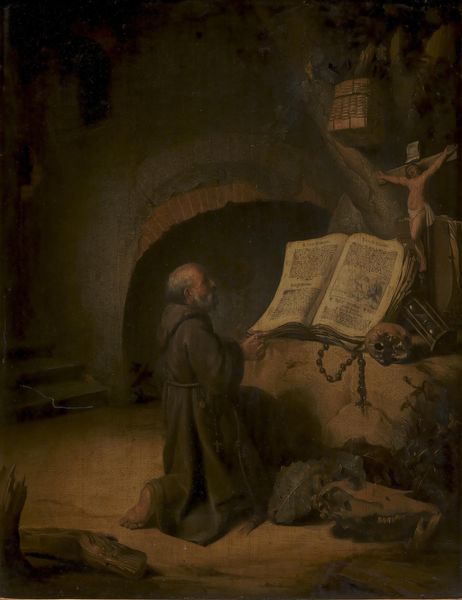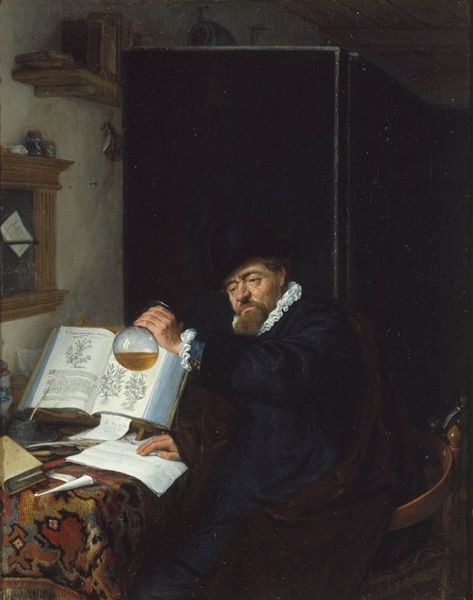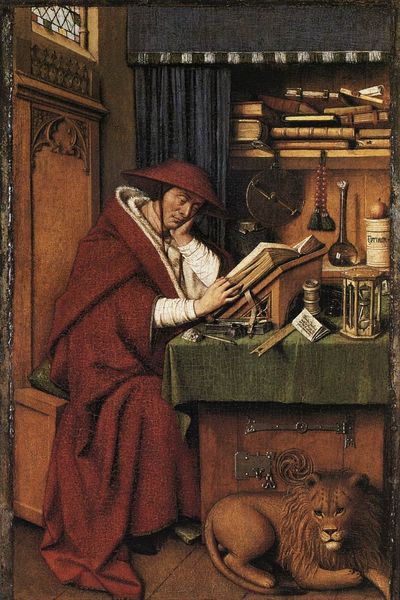
oil-paint
#
portrait
#
dutch-golden-age
#
oil-paint
#
oil painting
#
intimism
#
genre-painting
#
realism
Dimensions: 27 x 23 cm
Copyright: Public domain
Curator: Let’s examine Gabriel Metsu’s 1661 oil on canvas, “The Apothecary,” sometimes titled "The Chemist." This genre scene, executed during the Dutch Golden Age, offers a striking glimpse into 17th-century life. What is your immediate reaction to this painting? Editor: Intriguing. My eye is drawn to the juxtaposition of the old, wise man with the traditional symbols of healing around him – the mortar and pestle, the labeled jars, the scholarly book filled with mysterious formulae. It evokes a sense of history, of arcane knowledge passed down through generations. Curator: It is quite compelling. And it's vital to understand that during the Golden Age in the Netherlands, advancements in science, including chemistry and medicine, were gaining ground in a complex, highly patriarchal and stratified society. Depictions like these not only documented the changes, but contributed to the normalization of this particular field in which many were excluded. How does the artist underscore the cultural importance of such individuals in this work? Editor: Certainly. Notice how Metsu uses light. The man’s face and the open pages of his book are bathed in it, illuminating his studious focus, his world of knowledge and healing set apart from the darkness that seems to engulf most of the picture. Vines creep down from above the frame and further underscore the sense of contained growth. Even his dark cap is haloed in shadow. He’s presented almost as an isolated, academic figure within his profession, and I sense this creates an impression of him as both venerable and wise. Curator: Absolutely. Metsu masterfully employs symbolism here. A poster showing a doctor and patient is displayed behind him as another signifier of identity. It serves to normalize and authenticate a burgeoning trade, profession and cultural touchstone at a very specific point in time, highlighting the growth and change of the time period. And how interesting that the foliage lends it an outdoor connection even in such an enclosed scene! Editor: You’re right, the outside element gives an added vitality to the piece, while the windowed perspective makes this moment of genre painting so voyeuristic, in a way. So we’re invited into not only his working world, but this figure is immortalized for the quiet significance of his contributions and intellect. Metsu understood the quiet gravity such characters carried within their world, a significance that is as beautiful as any Madonna. Curator: It provides us an amazing look at medical accessibility at a time that looks so dramatically different to modern audiences. What a treasure for scholars to see! Editor: Agreed. These artistic works are as essential as historical documents when approaching the nuances of daily life throughout generations.
Comments
No comments
Be the first to comment and join the conversation on the ultimate creative platform.
